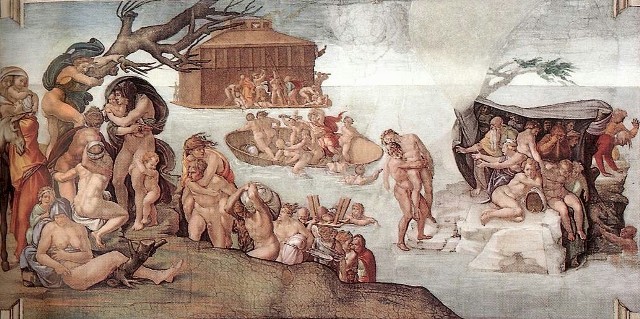Мы продолжаем напряженно работать, чтобы улучшить наш сайт и перевести его на другие языки. Русская версия этой страницы еще не совсем готова. Поэтому мы представляем здесь пока английскую версию. Мы благодарим вас за понимание.
Азазелло
Context
Azazello is a short but extraordinarily broad-shouldered man, with a bowler hat on his head and a fang sticking out of his mouth, which made still uglier a physiognomy unprecedentedly loathsome without that. And with flaming red hair besides.
His main function in the novel is violence. He throws Poplavsky down the stairs, sends Likhodeev to Yalta, and shoots Baron Meigel. But he can also be charming, for he is the one who invites Margarita to meet Woland, offering her the ointment by which she will turn into a witch.
After Satans' ball, when Woland is gathering with his retinue and servants, he performs an amazing act with an automatic gun, a pillow and a seven of spades. «I would not want to meet you when you're carrying a gun,» Margarita said, casting coquettish glances at Azazello. Because she had a passion for anyone who did something top-notch. «Precious Queen,» squeaked Koroviev, «I wouldn't advise anyone to meet him, even if he's not carrying a gun!.»
Prototype
Bulgakov adds an Italian ending to the Hebrew name עֲזָאזֵל [Azazel]. In various religious tendencies and writings, the name Azazel is synonymous with Satan. In the archives of Bulgakov the book Azazel and Dionysus was found, which was written in 1924 by the director, dramaturge, historian, philosopher and psychologist Nikolay Nikolaevich Evreynov (1879-1953). We have not been able to consult the text of that book, so we do not know what influence it could have had on the character of Azazello in The Master and Margarita.

Азазель и Дионис
In any case, according to ancient biblical traditions, Azazel was originally one of the most powerful and brightest angels in heaven. But when God created man, Azazel rebelled, and refused to bow before Adam, the first man. «Why would God create a man who will shed blood and confusion while the angels prostrate themselves before him and sing his glory day and night?» In response to this rebellion, Azazel and many other angels were cast out of heaven, and the fallen angels or devils arose.

Падение мятежных ангелов (Брейгель, 1562)
That punishment, however, did not end the rebellion of Azazel. According to the apocryphal Book of Enoch, he became the leader of the grigori, a group of fallen angels who had intercourse with mortal women, giving rise to a race of giants, known as the Nephilim. According to Enoch:8, Azazel was the grigori who taught the people to make weapons and jewels, and the women also learned from him the «sinful art» to «paint their faces». No wonder that it was him who offered the ointment which makes Margarita younger. His teaching created so much injustice that God decided to destroy all life on earth in Noah's Flood.

Всемирный потоп (Микеланджело, 1512)
Azazel is also at the origin of the word scapegoat. In the Old Testament we can read in Leviticus:16 that on Yom Kippur or on the Day of Atonement the high priest must take a ram and two goat bucks for a burnt offering. The ram is for the sanctification of the priest himself. One goat is intended as a sacrifice for God. On the head of the other animal, the priest had to lay his hands so as to burden it with the sins of the people. Then the «scapegoat» is released and sent into the desert, to עֲזָאזֵל [Azazel]: «But the goat chosen by lot as the scapegoat shall be presented alive before the Lord to be used for making atonement by sending it into the wilderness as a scapegoat».
In modern Hebrew the expression «go to azazel» means as much as «drop dead». Objects that «went to azazel», are broke and irreparable. And time, money or efforts that «went to azazel» are forever lost. In short, azazel is always a negative destination.
Azazello Woland and Fiello
In the successive versions of The Master and Margarita, the demonic characters have undergone a number of name changes. The foreign magician, whom we now know as Professor Woland, was initially called Azazello Woland. The character that we now know as Azazello was then called Фиелло [Fiello], and was described as a kind of jester with «a small figure, crippled and completely covered with bells». In the book Bulgakov Deciphered. The secrets of The Master and Margarita from 2010, Bulgakov expert Boris Vadimovich Sokolov (°1957) argues that the name Fiello would be derived from the Latin word filius or son. That could make him a parodying devil's equivalent of the son of man Jesus of Nazareth.
In 1934, Bulgakov gave the demonic characters their final names. Fiello became Azazello and Azazello Woland became just Woland.
Transformation
When the demons are transformed again to their original form Azazello loses his fang. The absurd, ugly fang disappeared without a trace, and the albugo on his eye proved false. Azazello's eyes were both the same, empty and black, and his face was white and cold. He flew in his true form, the demon of the waterless desert, the killer-demon.